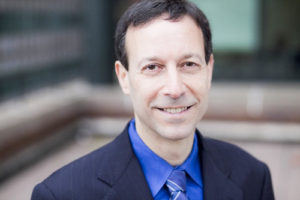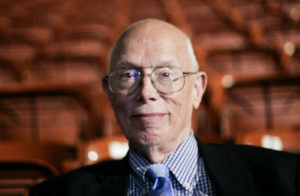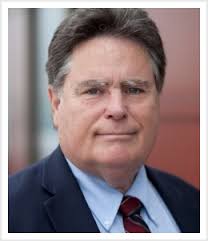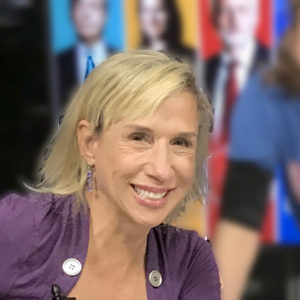Contact Mace News President
Tony Mace tony@macenews.com
to find a customer- and markets-oriented brand of news coverage with a level of individualized service unique to the industry. A market participant told us he believes he has his own White House correspondent as Mace News provides breaking news and/or audio feeds, stories, savvy analysis, photos and headlines delivered how you want them. And more. And this is important because you won’t get it anywhere else. That’s MICRONEWS. We know how important to you are the short advisories on what’s coming up, whether briefings, statements, unexpected changes in schedules and calendars and anything else that piques our interest.
No matter the area being covered, the reporter is always only a telephone call or message away. We check with you frequently to see how we can improve. Have a question, need to be briefed via video or audio-only on a topic’s state of play, keep us on speed dial. See the list of interest areas we cover elsewhere
on this site.
—
You can have two weeks reduced price no-obligation trial for $199. No self-renewing contracts. Suspend, renew coverage at any time. Stay with a topic like trade while it’s hot and suspend coverage or switch coverage areas when it’s not. We serve customers one by one, 24/7.
—
Tony Mace was the top editorial executive for Market News
International for two decades.
Washington Bureau Chief Denny Gulino had the same title at Market News for 18 years.
Similar experience undergirds our service in Ottawa, London, Brussels and in Asia.

President
Mace News

D.C. Bureau Chief
Mace News

Federal Reserve
Mace News

Reporter and expert on the currency market.
Mace News

Reporter and expert on derivatives and fixed income markets.
Mace News

Financial Journalist
Mace News

Reporter, economic and political news.
Japan and Canada
Mace News
By Steven K. Beckner
(MaceNews) – Two Federal Reserve Bank presidents reinforced the growing consensus that the Fed will not be lowering short-term interest rates any time soon Thursday.
John Williams, one of the Fed’s most important monetary policymakers as president of the Federal Reserve Bank of New York, said the Fed’s policymaking Federal Open Market Committee will “eventually” cut the federal funds rate, but said he does not see “any urgency” to do so.
The FOMC vice chairman didn’t even rule our raising interest rates if the inflation data were to dictate such a monetary policy “adjustment.”
Williams observed that the economy remains strong despite the Fed’s 525 basis points of rate hikes since March 2022, implying that the Fed’s rate settings are not as “restrictive” as Chair Jerome Powell has repeatedly portrayed them as being.
Atlanta Fed President Raphael Bostic, a voting member of the FOMC, advocated “patience” and said he sees no rate cuts until late this year.
The Williams and Bostic comments come less than two weeks before the FOMC meets to take fresh stock of economic and financial conditions and set interest rates. And they come in wake of data that not only show inflation running at 3 ½% or more in the first quarter, but also labor markets remaining tight and strong consumer spending propelling GDP growth at a pace well in excess of the Fed’s estimated “longer run” potential.
At its March 19-20 meeting, the FOMC left the funds rate in a 5.25% to 5.50% target range and reiterated 2024 projections for three 25 basis point rate cuts, but declared, “the Committee does not expect it will be appropriate to reduce the target range until it has gained greater confidence that inflation is moving sustainably toward 2%.”
Since then, rate cuts hopes have dimmed. Earlier this year, financial markets were expecting the FOMC to start reducing the funds rate in May and to cut it at least six times this year. But as disappointing inflation and other data forced Fed officials to reassess prospects for lowering inflation to 2%, rate cut forecasts have been delayed and diminished. Wall Street Fed watchers now believe the Fed will delay the start of rate cuts until September or even beyond.
In a significant departure Tuesday, Powell seemed to confirm reduced expectations for monetary easing by saying, “the recent data have clearly not given us greater confidence” that inflation is headed toward the 2% target. On the contrary, he said, recent data suggest “it is likely to take longer than expected to achieve that confidence.”
“Right now, given the strength of the labor market and progress on inflation so far, it’s appropriate to allow restrictive policy further time to work and let the data and the evolving outlook guide us,” he added in what was widely seen as a capitulation to the reality of persistent inflation.
Earlier, Vice Chair Philip Jefferson also signaled a cautious, wait-and-see approach to easing. “My baseline outlook continues to be that inflation will decline further, with the policy rate held steady at its current level …. (T)he outlook is still quite uncertain, and if incoming data suggest that inflation is more persistent than I currently expect it to be, it will be appropriate to hold in place the current restrictive stance of policy for longer.”
Some officials, notably Minneapolis Fed President Neel Kashkari, have mused that it may not be appropriate to cut rates at all this year.
Williams did not go that far at a Semafor World Economy Summit, but his open-ended remarks suggested that he does not feel bound by previous FOMC rate cut projections.
Williams said he still sees the Fed wanting to cut rates “eventually,” but gave no time frame or preferred amount of rate cuts. He didn’t even rule out higher rates, although he said that’s not his “base case.”
For now, he said monetary policy is “in a good place.”
Williams pointed to strong GDP and job growth and to positive supply side developments, particularly in the labor market. He said, “we’re seeing imbalances come down.”
He also said, “we’re seeing inflation come down,” but said “we have more work to do.” Lately, he noted, inflation has been “on a little bit of a bumpy road” – an obvious reference to the January through March data which showed inflation averaging over 3%.
So, he said the Fed will “eventually lower interest rates as inflation gets to 2%,” but he added, “I definitely don’t see any urgency to cut rates.”
“My expectation is, as inflation gets all the way to 2% on a sustained basis, as the economy is in good balance, interest rates will need to be lower at some point,” he said, but “the timing of that is driven by the economy.”
Other Fed officials have lately said that the economy’s stronger than expected performance shows that monetary policy is not as “restrictive” as heretofore believed. Williams did not explicitly echo that sentiment, but pointed to strong GDP growth, job gains and 3.8% unemployment as evidence that the Fed’s monetary tightening has not hurt the economy.
“We have a strong economy, we want a strong economy, that’s all very good news, but it also means that the rates that we have haven’t caused the economy to slow too much,” he said.
Throughout last year, Powell and others often stated that achieving 2% inflation goal would likely require “below potential” (1.8%) GDP growth and some “softening” of labor market conditions, although they have also expressed hope that the economy could achieve a “soft landing.”
Asked if the Fed might actually need to raise rates to get inflation down Williams replied, “That’s not my base case,” but “it’s hard to predict the future …. We will adjust our policy to meet our goals .…
“If the data tell us we need higher interest rates to achieve our goals, then obviously we would want to do that,” he added.
He said the Fed’s job is to “make sure supply and demand are in balance.”
Asked if the Fed might abandon its 2% inflation goal, Williams replied with “one word: No.”
“The 2% goal is very important,” he went on. “It’s important not only to have that goal but to actually achieve it to reinforce that credibility.” He claimed the Fed’s commitment to 2% inflation as an objective has helped keep inflation expectations under control.
Bostic, speaking at a forum sponsored by the Greater Fort Lauderdale (Florida) Alliance, also stressed the need to reduce inflation to 2% and advocated “patience” in getting there.
He observed that inflation has been falling, but not as rapidly as hoped, and he said he’s “okay with that” as long as “the economy is producing a lot of jobs.”
Bostic said the Fed’s “restrictive stance will slow us down and get us to 2%.,” but added, “I’m not in mad dash to be there.”
He said he will “be patient” and watch both sides of the Fed’s dual mandate of maximum employment and price stability.
As for the funds rate level, Bostic said, “I’m happy to just stay where we are.”
In Bostic’s view, the FOMC “won’t be in position to lower our rates until toward the end of this year.”
He said he does not foresee a recession.
WASHINGTON (MaceNews) – The following are Thursday’s’s schedules for the White House, Treasury, USTR, the State Department and Capitol Hill as well as U.S. economic data
DAILY GUIDANCE AND PRESS SCHEDULE FOR
THURSDAY, APRIL 18, 2024
In the morning, the President will receive the President’s Daily Brief. This meeting will be closed press.
Then, the President will travel to Philadelphia, Pennsylvania. The departure from the South Lawn will be open press. The departure from Joint Base Andrews will be covered by the out-of-town pool. The arrival at Philadelphia International Airport will be open press.
In the afternoon, the President will participate in two campaign events in Philadelphia, Pennsylvania. The first will be open press, while the second will be covered by the out-of-town pool.
After, the President will return to the White House. The departure from Philadelphia International Airport and the arrival at Joint Base Andrews will be covered by the out-of-town pool. The arrival on the South Lawn will be open press.
In-Town Pool
Wires: AP, Reuters, Bloomberg
Wire Photos: AP, Reuters, AFP, NYT
TV Corr & Crew: CBS
Print: Wall Street Journal
Radio: BBC
Out-of-Town Pool
Wires: AP, Reuters, Bloomberg
Wire Photos: AP, Reuters, AFP, NYT
TV Corr & Crew: CBS
Print: Daily Mail
Radio: iHeartRadio
EDT
9:00 AM THE PRESIDENT receives the President’s Daily Brief
Closed Press
9:00 AM In-Town Pool Call Time
9:30 AM Out-of-Town Pool Call Time
Joint Base Andrews Overhang
10:15 AM THE PRESIDENT departs the White House en route to Joint Base Andrews
South Lawn
Open Press (Gather 10:00 AM – Palm Room Doors)
10:35 AM THE PRESIDENT departs Joint Base Andrews en route to Philadelphia, Pennsylvania
Joint Base Andrews
Out-of-Town Pool
11:20 AM THE PRESIDENT arrives in Philadelphia, Pennsylvania
Philadelphia International Airport
Open Press
12:45 PM THE PRESIDENT participates in a campaign event
Philadelphia, Pennsylvania
Open Press
1:45 PM THE PRESIDENT participates in a campaign event
Philadelphia, Pennsylvania
Out-of-Town Pool
3:50 PM THE PRESIDENT departs Philadelphia, Pennsylvania en route to Joint Base Andrews
Philadelphia International Airport
Out-of-Town Pool
4:45 PM THE PRESIDENT departs Joint Base Andrews en route to the White House
Joint Base Andrews
Out-of-Town Pool
4:55 PM THE PRESIDENT arrives at the White House
South Lawn
Open Press (Gather 4:40 PM – Palm Room Doors)
Briefing Schedule
Press Secretary Karine Jean-Pierre will gaggle aboard Air Force One en route to Philadelphia, Pennsylvania.
###
TREASURY DEPT –
Thursday – Secretary of the Treasury Janet L. Yellen, Deputy Secretary of the Treasury Wally Adeyemo, and other senior Treasury officials will represent the United States in the 2024 Spring Meetings of the International Monetary Fund (IMF) and the World Bank Group (WBG) and will participate in events on the margins in Washington, DC.
At 10:00 AM, Secretary Yellen will participate in a meeting of G20 Finance Ministers and Central Bank Governors. This meeting at the IMF is closed press.
At 12:40 PM, Secretary Yellen will participate in a bilateral meeting with Chancellor of the Exchequer Jeremy Hunt of the United Kingdom. This meeting at the IMF is closed press.
At 1:15 PM, Secretary Yellen will participate in a bilateral meeting with Finance Minister Giancarlo Giorgetti of Italy. This meeting at the IMF is closed press.
At 2:00 PM, Secretary Yellen will participate in the Financial Action Task Force (FATF) Ministerial meeting. This meeting is closed press.
At 3:00 PM, Secretary Yellen will participate in a meeting with Finance Minister Nicola Willis of New Zealand. This meeting is closed press.
At 3:15 PM, Secretary Yellen will host a meeting of the Five Eyes Finance Ministers with Chancellor of the Exchequer Jeremy Hunt of the United Kingdom, Treasurer Jim Chalmers of Australia, Deputy Prime Minister and Finance Minister Chrystia Freeland of Canada, and Finance Minister Nicola Willis of New Zealand. There is a photo spray at the conclusion of this meeting at Treasury, which is open to pre-credentialed press.Media interested in joining this photo spray can email press@treasury.gov.
STATE DEPT
Thursday – Secretary Blinken is on travel to Italy from April 16-19, 2024.
9:00 a.m. LOCAL Secretary Blinken meets with Ukranian Foreign Minister Dmytro Kuleba in Capri, Italy.
(POOLED CAMERA SPRAY AT TOP)
9:30 a.m. Secretary Blinken participates in a G7 Foreign Ministers session on the Middle East in Capri, Italy.
(POOLED CAMERA SPRAY AT TOP)
11:30 a.m. Secretary Blinken participates in a G7 Foreign Ministers session on the Situation in the Red Sea in Capri, Italy.
(CLOSED PRESS COVERAGE)
12:50 p.m. LOCAL Secretary Blinken participates in a G7 Foreign Ministers family photo with AU representatives in Capri, Italy.
(POOLED PRESS COVERAGE)
1:00 p.m. LOCAL Secretary Blinken attends a G7 Foreign Ministers working lunch with AU representatives in Capri, Italy.
(CLOSED PRESS COVERAGE)
3:30 p.m. Secretary Blinken attends a G7 Foreign Ministers session on Russia’s War of Aggression Against Ukraine in Capri, Italy.
(CLOSED PRESS COVERAGE)
4:45 p.m. LOCAL Secretary Blinken participates in a G7 Foreign Ministers family photo with NATO Secretary General Jens Stoltenberg and Ukrainian Foreign Minister Dmytro Kuleba in Capri, Italy.
(POOLED PRESS COVERAGE)
4:50 p.m. Secretary Blinken attends a G7 Foreign Ministers session on Support for Ukraine with NATO Secretary General Jens Stoltenberg and Ukrainian Foreign Minister Dmytro Kuleba in Capri, Italy.
(POOLED CAMERA SPRAY AT TOP)
6:45 p.m. LOCAL Secretary Blinken participates in a G7 Foreign Ministers official family photo in Capri, Italy.
(POOLED PRESS COVERAGE)
7:30 p.m. LOCAL Secretary Blinken attends a G7 Foreign Ministers dinner in Capri, Italy.
(CLOSED PRESS COVERAGE)
Headquarters press briefings, when held on weekdays, occur around 1:15p ET and are livestreamed at State.gov. The transcript of Wednesday’s 1:11p ET briefing is at: https://www.state.gov/briefings/department-press-briefing-april-17-2024/
Tuesday’s 1:20p briefing is at: https://www.state.gov/briefings/department-press-briefing-april-16-2024/
USTR
Thursday – Ambassador Tai has no public engagements.
US HOUSE
Thursday – –Back at 9a ET
US SENATE
Thursday –12:00 p.m.: Convene and resume consideration of the motion to proceed to H.R.7888, Reforming Intelligence and Securing America Act.
UPCOMING US, JAPAN, CANADA ECONOMIC REPORTS AND FEDERAL RESERVE EVENTS
Thursday, April 18 – 8a ET IMF MD briefing on global policy agenda
Thursday, April 18 – 8:30a ET US jobless claims
Thursday, April 18 – 8:30a ET US Philadelphia Fed manufacturing
Thursday, April 19 – 9:05a ET Fed’s Bowman opening remarks, community bank conf
Thursday, April 18 – 9:15a ET Fed’s Williams moderated discussion at Semafor conference
Thursday, April 18 – 10a ET US existing home sales
Thursday, April 18 – 10a ET US leading indicators
Thursday, April 18 – 10:30a ET US EIA weekly natural gas inventories
Thursday, April 18 – 11:00a ET Fed’s Bostic moderated discussion at Prosperity Partnership of Fort Lauderdale
Thursday, April 18 – 12:00 ET US Freddie Mac mortgage rates
Thursday, April 18 – 13:00 ET US 5-year TIPS auction
Thursday, April 18 – 16:30 ET US Fed weekly balance sheet
Thursday, April 18 – 17:45 ET Fed’s Bostic armchair chat at University of Miami
Thursday, April 18 – 19:30 ET Japan CPI
—
Friday, April 19 – 10:30a ET Fed’s Goolsbee moderated Q&A at SABEW in NY
Friday, April 19 – 11:30a ET IMF Concluding IMFC Press Briefing
Friday, April 19 – 13:00 ET US Baker Hughes oil rigs
—
Content may appear first or exclusively on the Mace News premium service. For real-time delivery contact tony@macenews.com. X (Twitter) headline news flow @macenewsmacro
The survey, assembled by the Fed’s Boston bank for review in the April 30-31 Federal Open Market Committee meeting, said 10 of the twelve Fed districts ‘experienced either slight or modest economic growth – up from eight in the previous report,”
Consumer price sensitivity “remained elevated,” hiring rose “at a slight pace” and price increases were “modest.”
The Beige Book summary and district-by-district snapshots follow, with boldfaced emphasis added:
Overall economic activity expanded slightly, on balance, since late February. Ten out of twelve Districts experienced either slight or modest economic growth—up from eight in the previous report, while the other two reported no changes in activity. Consumer spending barely increased overall, but reports were quite mixed across Districts and spending categories. Several reports mentioned weakness in discretionary spending, as consumers’ price sensitivity remained elevated. Auto spending was buoyed notably in some Districts by improved inventories and dealer incentives, but sales remained sluggish in other Districts. Tourism activity increased modestly, on average, but reports varied widely. Manufacturing activity declined slightly, as only three Districts reported growth in that sector. Contacts reported slight increases in nonfinancial services activity, on average, and bank lending was roughly flat overall. Residential construction increased a little, on average, and home sales strengthened in most Districts. In contrast, nonresidential construction was flat, and commercial real estate leasing fell slightly. The economic outlook among contacts was cautiously optimistic, on balance.
Employment rose at a slight pace overall, with nine Districts reporting very slow to modest increases, and the remaining three Districts reporting no changes in employment. Most Districts noted increases in labor supply and in the quality of job applicants. Several Districts reported improved retention of employees, and others pointed to staff reductions at some firms. Despite the improvements in labor supply, many Districts described persistent shortages of qualified applicants for certain positions, including machinists, trades workers, and hospitality workers. Wages grew at a moderate pace in eight Districts, with the remaining four noting only slight to modest wage increases. Multiple Districts said that annual wage growth rates had recently returned to their historical averages. On balance, contacts expected that labor demand and supply would remain relatively stable, with modest further job gains and continued moderation of wage growth back to pre-pandemic levels.
Price increases were modest, on average, running at about the same pace as in the last report. Disruptions in the Red Sea and the collapse of Baltimore’s Key Bridge caused some shipping delays but so far did not lead to widespread price increases. Movements in raw materials prices were mixed, but six Districts noted moderate increases in energy prices. Contacts in several Districts reported sharp increases in insurance rates, for both businesses and homeowners. Another frequent comment was that firms’ ability to pass cost increases on to consumers had weakened considerably in recent months, resulting in smaller profit margins. Inflation also caused strain at nonprofit entities, resulting in service reductions in some cases. On balance, contacts expected that inflation would hold steady at a slow pace moving forward. At the same time, contacts in a few Districts—mostly manufacturers—perceived upside risks to near-term inflation in both input prices and output prices.
Business activity expanded at a modest pace in recent weeks, and prices rose slightly. Employment was flat overall, but one retailer reported significant layoffs. Convention and tourism activity grew at a robust pace. Home sales increased on a year-over-year basis, marking a turnaround. The outlook ranged from cautiously optimistic to bullish.
On balance, regional economic activity remained flat. Labor market conditions were solid and continued to normalize as labor supply and labor demand came into better balance. Consumer spending was unchanged after a weak first quarter. Housing markets strengthened, with the spring selling season picking up beyond the seasonal norm. The pace of selling price increases remained modest.
On balance, business activity was flat in the current Beige Book period—after declining slightly last period. Employment edged up, despite staffing and recruitment efforts slowing to a crawl. Wage and price inflation continue to moderate; however, housing affordability continues to be a concern. Overall, the outlook is positive, as firms remained optimistic about expectations for future growth.
District business activity increased modestly, as did employment. Firms anticipated greater ease filling open positions, including those that have been particularly challenging, because of increased labor availability. Wage pressures continued to normalize, and some contacts reduced starting wages for new roles. Cost and price pressures changed little.
The regional economy grew at slight pace since our previous report. Consumer spending on retail goods was mixed but spending on travel and tourism was up slightly. Fifth District port activity slowed and was impacted by the collapse of the Francis Scott Key Bridge. Employment growth slowed from a moderate to a modest rate in recent weeks, but wages continued to grow moderately. Price growth also remained moderate.
The Sixth District economy grew modestly. Labor markets continued to stabilize; wage pressures eased. Many nonlabor costs moderated. Retail sales were steady, but consumers remained price conscious. Tourism remained robust. Commercial real estate conditions slowed. Transportation activity was mixed. Manufacturing grew slightly. Loan demand was flat. Energy activity improved.
Economic activity increased slightly. Employment increased modestly; business and consumer spending rose slightly; nonbusiness contacts saw no change in activity; and manufacturing and construction and real estate activity were flat. Prices and wages rose moderately, while financial conditions were stable. Prospects for 2024 farm income were unchanged.
Economic activity has continued to increase slightly since our previous report. Prices have increased modestly, as contacts are broadly feeling the pressures of increases in both labor and non-labor costs. The outlook was neutral to slightly optimistic, which is generally unchanged from our previous report, but better than one year ago.
District economic activity grew slightly. Employment grew some, but labor demand was softer. Wage pressures were present but continued to ease, while price pressures ticked up. Consumer spending was mostly flat, and manufacturing slowed modestly. Commercial and residential construction improved slightly. Agricultural conditions were steady at low levels.
The District economy expanded modestly. Demand for auto loans and residential mortgages rose as borrowing rates declined. Demand for HELOC also increased as a means to consolidate or refinance household debt. Job gains were modest even as worker availability improved slightly.
The Eleventh District economy expanded modestly. While activity in services and housing grew, manufacturing output, retail sales, and loan demand declined slightly. Employment growth slowed as wages, input costs, and selling prices grew at a moderate pace. Overall, Texas firms noted an uptick in uncertainty.
Economic activity continued to grow at a slight pace, employment levels were little changed, and prices and wages rose slightly. Retail sales were unchanged, and demand for services grew modestly. Demand for manufactured products changed little, and conditions in agriculture were mixed. Real estate activity was slightly down. Financial sector conditions were largely unchanged.
—
Content may appear first or exclusively on the Mace News premium service. For real-time delivery in entirety contact tony@macenews.com. X (Twitter) headlined news flow @macenewsmacro.
WASHINGTON (MaceNews) – The following are Thursday’s schedules for the White House, Treasury, USTR, the State Department and Capitol Hill as well as U.S. economic data
WASHINGTON (MaceNews) – The Federal Open Market Committee’s latest meeting saw a cautious wariness about the possible arrival of worse data – anticipating the day’s
–Governing Council Looking for Evidence Downward Momentum in Inflation Is Sustained–Governor Macklem: Lowering Policy Rate Too Early or Cutting Too Fast Could Jeopardize Progress Made
WASHINGTON (MaceNews) – The following are Wednesday’s schedules for the White House, Treasury, USTR, the State Department and Capitol Hill as well as U.S. economic data
—Producer Inflation Has Slowed from Recent Peak of 10.6% in December 2022 Amid Relatively Tame Commodities Markets–Producer Prices Up 0.2% M/M on Non-Ferrous Metals, Farm
–Governing Council Monitoring Inflation Expectations, Wage Growth, Corporate Pricing–Governor Macklem Wants to See Clear Downward Momentum in Underlying Inflation By Max Sato (MaceNews) – The
WASHINGTON (MaceNews) – The following are Tuesday’s schedules for the White House, Treasury, USTR, the State Department and Capitol Hill as well as U.S. economic data
By Silvia Marchetti ROME (MaceNews) – Italy’s rightist leader Giorgia Meloni is pushing through parliament a key constitutional reform to boost powers of the head
Contact Mace News President
Tony Mace tony@macenews.com
to find a customer- and markets-oriented brand of news coverage with a level of individualized service unique to the industry. A market participant told us he believes he has his own White House correspondent as Mace News provides breaking news and/or audio feeds, stories, savvy analysis, photos and headlines delivered how you want them. And more. And this is important because you won’t get it anywhere else. That’s MICRONEWS. We know how important to you are the short advisories on what’s coming up, whether briefings, statements, unexpected changes in schedules and calendars and anything else that piques our interest.
No matter the area being covered, the reporter is always only a telephone call or message away. We check with you frequently to see how we can improve. Have a question, need to be briefed via video or audio-only on a topic’s state of play, keep us on speed dial. See the list of interest areas we cover elsewhere
on this site.
—
You can have two weeks reduced price no-obligation trial for $199. No self-renewing contracts. Suspend, renew coverage at any time. Stay with a topic like trade while its hot and suspend coverage or switch coverage areas when it’s not. We serve customers one by one 24/7.
—
Tony Mace was the top editorial executive for Market News International for two decades.
Washington Bureau Chief Denny Gulino had the same title at Market News for 18 years.
Similar experience undergirds our service in Ottawa, London, Brussels and in Asia.